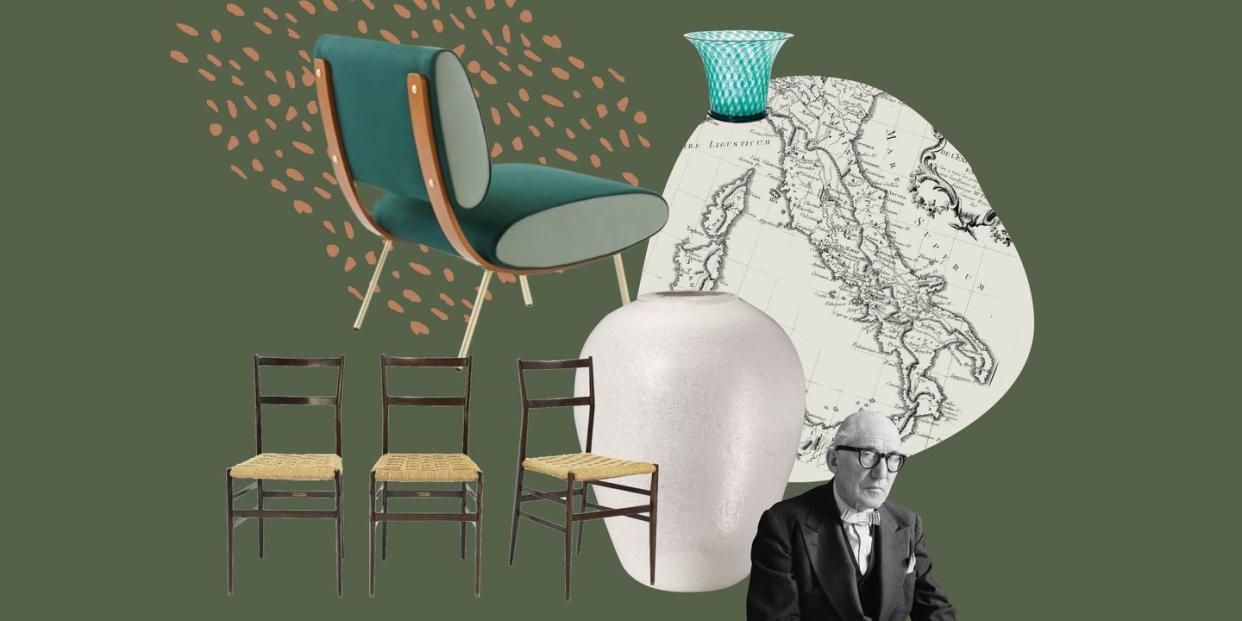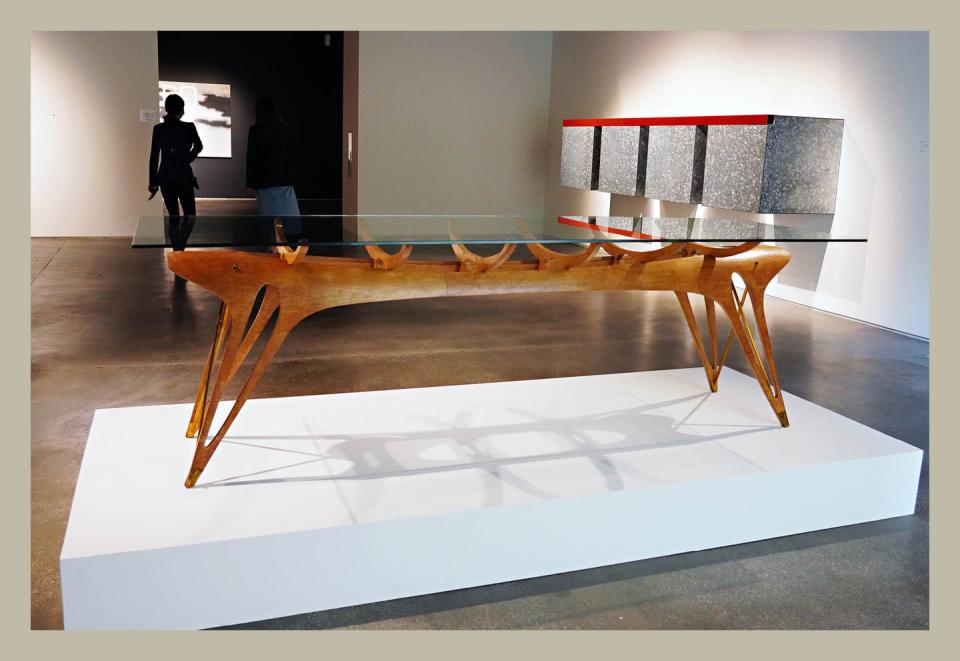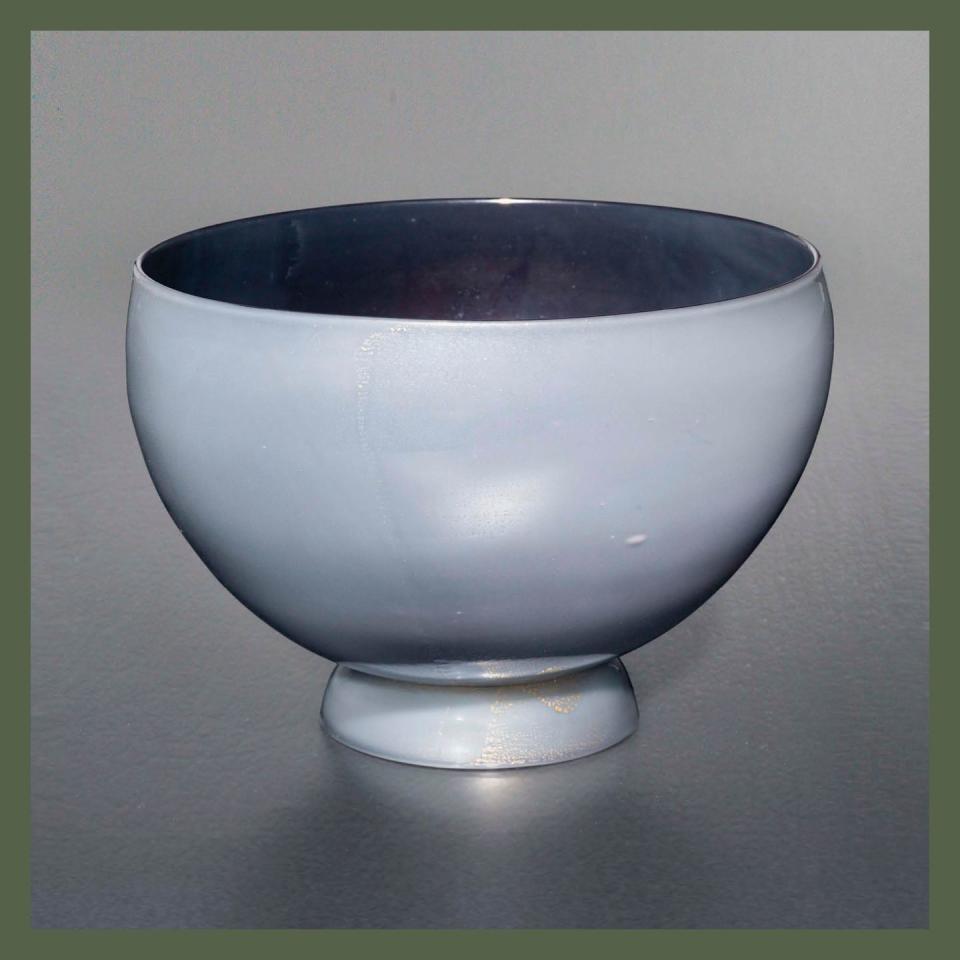Here's How To Recognize Italian Midcentury Design

- Oops!Something went wrong.Please try again later.
- Oops!Something went wrong.Please try again later.
- Oops!Something went wrong.Please try again later.
- Oops!Something went wrong.Please try again later.
- Oops!Something went wrong.Please try again later.
“Hearst Magazines and Verizon Media may earn commission or revenue on some items through the links below.”
So you think you know midcentury modern design? You may know heavy-hitters like Le Corbusier, Charles and Ray Eames, Eero Saarinen, Hans Wegner, and Arne Jacobsen, but how familiar are you with Gio Ponti, Achille Castiglioni, Carlo Scarpa, and Carlo Mollino?
Though these midcentury Italian designers may not have the name recognition as some of their Scandinavian and American counterparts in the mass market, they were integral to developing a modern aesthetic in Europe and there's a steady market for their furniture that continues to grow today. Molteni&C is putting Gio Ponti’s 1957 Round chair back into production after one of the originals was auctioned off for $80,000 at Phillips last year. Check 1stdibs and you’ll find a set of three of Ponti’s first edition 1957 Superleggera chairs currently available for $9,000.
The 1962 Arco lamp by brothers Pier Giacomo and Achille Castiglione for Flos has been copied endlessly but never improved upon. Flos currently sells it for $3,295. A Christie’s auction of Carlo Scarpa’s glass yielded prices in the tens of thousands of dollars. Last year, a Carlo Mollino dining table auctioned at Sotheby’s sold for a record-breaking $6.2 million.

Like their international counterparts, these Italian designers prized the marriage of form and function, but there are a few key differences that set Italian midcentury design apart. “It’s all coming from a group of men and women of the upper classes,” art historian Brian Kish, one of the foremost experts on 20th century Italian design, tells House Beautiful. “These so-called gentlemen—and gentlewomen—architects had a great education, usually of the classics, and a command of history, and they had great libraries inherited from generations of family.” This pattern, according to Kish, was anachronistic and didn’t fit the narrative of many modernist designers at the time.
Whereas in the United States, modernism was linked to suburban expansion and the need to democratize good design for the middle class, in Italy good design was generally being produced by and for the upper class. Though the advent of new materials like plastic, foam, and fiberglass revolutionized the production process, Italian designers still valued craft over industrialization. And even when they worked with new materials or ways of engineering, they prized more traditional materials like ceramics, glass, wood, and marble.
“They take it very seriously—it’s part of the national identity,” Kish said. “You’re dealing with a culture of millennia too—more than two millennia of culture. And that’s why it’s harnessed by these upper-class gentlemen who take their work seriously.”
Take Gio Ponti, for example. According to Kish, Ponti is the figure who catapulted Italy into the 20th century, and he was quite the Renaissance man. A trained architect who built private homes, churches, and skyscrapers, he also designed ceramics for Richard Ginori, crafted furniture for his projects, founded and edited the magazine Domus, and taught at the Politecnico di Milano, Italy’s most prestigious university for architecture, design, and engineering. He collaborated with and championed architects, designers, and artists like Piero Fornasetti, Achille Castiglioni, Lucio Fontana, and Ettore Sottsass. He introduced his audience of Italian readers to international design stars like Le Corbusier, Ludwig Mies Van Der Rohe, Jean-Michel Frank, and Marcel Breuer. He was incredibly prolific, designing homes everywhere from Caracas to Tehran.
Look at Ponti’s Villa Planchart in Caracas and Hotel Parco dei Principi in Sorrento and you’ll see many elements emblematic of mid-century design: sleek lines, simple geometries, open plan layouts, and the blurring of indoor and outdoor space. But there’s something about his use of color that seems uniquely Italian. The strictly blue and white color scheme of the Hotel Parco dei Principi mirrors the many shades of blue seen just outside the hotel in the Mediterranean Sea. The sunny yellow, forest green, and warm browns of Villa Planchart evoke the Italian countryside. For Ponti and his Italian contemporaries, color was key.

“So there’s a resurgence—why?” Kish ponders. “Because I think it’s very compelling, it’s joyful, it’s very easy, it’s got not just a superficiality and whimsy, but it’s also very integral, it’s also material bound and craft bound. Maybe we’re looking for that as well.”
According to Kish, Italy boasts the most architecture students per capita of any country in the world and young designers still look to the midcentury masters for inspiration. So the next time you’re looking to the 20th century for inspiration, an Italian tour might be in order.
Follow House Beautiful on Instagram.
You Might Also Like

